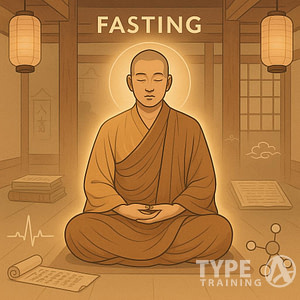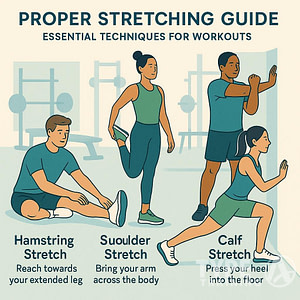Chair Yoga for Seniors: The Ultimate Guide to a Healthy and Active Lifestyle can greatly enhance your physical and mental well-being.
If you’re a senior looking for a gentle way to stay active and improve your physical and mental well-being, chair yoga may be just what you need. Chair yoga is a modified form of yoga that is done while sitting on a chair or using a chair for support. It is a great way to incorporate the benefits of yoga into your daily routine, regardless of your age or fitness level.
One of the main benefits of chair yoga is that it is easy and accessible for seniors. Chair yoga asanas (poses) are designed to be gentle and low-impact, making them safe and effective for people with limited mobility or balance issues. In addition, chair yoga can help improve flexibility, strength, and range of motion, while also reducing stress and promoting relaxation. With regular practice, chair yoga can help seniors maintain their independence and improve their overall quality of life.
Chair Yoga for Seniors: The Ultimate Guide to a Healthy and Active Lifestyle is designed specifically for older adults.
Popular posts:
Chair Yoga for Seniors: The Ultimate Guide to a Healthy and Active Lifestyle
If you are a senior or have limited mobility, Chair Yoga is a great way to incorporate yoga into your daily routine. It is a gentle form of yoga that is done while sitting on a chair or using a chair for support. It is an excellent way to improve flexibility, strength, balance, and overall well-being.
Incorporating Chair Yoga for Seniors: The Ultimate Guide to a Healthy and Active Lifestyle into your routine is simple and beneficial.
Chair Yoga is an accessible form of yoga that is suitable for people of all fitness levels. It is perfect for seniors who may have difficulty getting up and down from the floor. You can practice Chair Yoga in the comfort of your own home, at a yoga studio, or online.
Chair Yoga for Seniors: The Ultimate Guide to a Healthy and Active Lifestyle can be practiced anywhere, providing great flexibility.
One of the benefits of Chair Yoga is that you do not need any special equipment. All you need is a chair and a yoga mat (optional). A yoga chair is a specially designed chair that is used for yoga. It has a higher backrest and a wider seat than a regular chair, which provides more support and stability.
Using the Chair Yoga for Seniors: The Ultimate Guide to a Healthy and Active Lifestyle, you can easily incorporate movement.
Chair Yoga sequences are designed to be gentle and easy to follow. They often include breathing exercises, gentle stretches, and simple yoga poses. A Chair Yoga sequence can be as short as 10 minutes or as long as an hour, depending on your needs and preferences.
Follow the Chair Yoga for Seniors: The Ultimate Guide to a Healthy and Active Lifestyle for a comprehensive routine.
According to Sofa Yoga, “Chair yoga is an innovative and highly accessible form of yoga that has been gaining immense popularity in recent years. By incorporating the use of a chair as a prop, it opens up the world of yoga to people of all ages.”
With Chair Yoga for Seniors: The Ultimate Guide to a Healthy and Active Lifestyle, you can enhance your practice.
If you are new to Chair Yoga, it is recommended that you take a few classes with a certified instructor to learn the proper alignment and modifications for each pose. You can find Chair Yoga classes at your local yoga studio or online.
Chair Yoga for Seniors: The Ultimate Guide to a Healthy and Active Lifestyle encourages seniors to stay active.
As BetterMe explains, “Chair yoga is a gentler form of yoga that is suitable for people of all fitness levels. It is a great way to improve flexibility, strength, and balance without putting stress on your joints.”
To learn more, check out Chair Yoga for Seniors: The Ultimate Guide to a Healthy and Active Lifestyle.
In summary, Chair Yoga is an easy and effective way for seniors and people with limited mobility to incorporate yoga into their daily routine. It is a gentle form of yoga that can be done while sitting on a chair or using a chair for support. It is accessible, requires minimal equipment, and can be practiced at home, at a yoga studio, or online.
Chair Yoga for Seniors: The Ultimate Guide to a Healthy and Active Lifestyle is a perfect way to engage.
Benefits of Chair Yoga for Seniors
Understand the benefits of Chair Yoga for Seniors: The Ultimate Guide to a Healthy and Active Lifestyle.
Chair yoga is an excellent way for seniors to enjoy the benefits of yoga without the need for standing or lying down on the floor. Here are some of the benefits of chair yoga for seniors:
Chair Yoga for Seniors: The Ultimate Guide to a Healthy and Active Lifestyle aids in maintaining independence.
Improved Mobility
Chair yoga can help improve mobility and flexibility, making it easier for seniors to perform daily activities. It can also help reduce the risk of injury by improving range of motion.
Practicing Chair Yoga for Seniors: The Ultimate Guide to a Healthy and Active Lifestyle can enhance mobility.
Better Balance
Many chair yoga poses focus on improving balance, which is especially important for seniors who may be at risk of falls. By practicing chair yoga regularly, seniors can improve their balance and reduce their risk of falls.
Increased Strength
Chair Yoga for Seniors: The Ultimate Guide to a Healthy and Active Lifestyle is perfect for improving strength.
Chair yoga can help seniors build strength in their muscles, including their core muscles. This can help improve posture and reduce the risk of back pain.
Enhanced Well-being
Chair yoga can help seniors feel more relaxed and at ease. It can also help reduce anxiety and stress, which can have a positive impact on mental health.
Chair Yoga for Seniors: The Ultimate Guide to a Healthy and Active Lifestyle also enhances relaxation.
Mind-Body Connection
Chair yoga can help seniors develop a stronger mind-body connection, which can improve overall well-being. By focusing on their breath and movements, seniors can become more aware of their body and its needs.
Explore how Chair Yoga for Seniors: The Ultimate Guide to a Healthy and Active Lifestyle connects body and mind.
Health Benefits
Chair yoga can provide a range of health benefits for seniors, including improved circulation, decreased
[bctt tweet=”Chair yoga can provide a range of health benefits for seniors, including improved circulation, decreased blood pressure, and reduced inflammation. #seniorhealth #seniorfitness #aging ” username=”typeatraining”]
For seniors, Chair Yoga for Seniors: The Ultimate Guide to a Healthy and Active Lifestyle provides myriad health benefits.
According to Yoga Journal, “Yoga is not just about physical exercise. It is about strengthening the mind-body connection and finding a sense of inner peace.” Chair yoga can provide seniors with an opportunity to connect with their bodies and minds in a gentle and supportive way.
Chair Yoga for Seniors: The Ultimate Guide to a Healthy and Active Lifestyle promotes mental connection.
In summary, chair yoga can provide seniors with a range of physical and mental health benefits. By practicing chair yoga regularly, seniors can improve their mobility, balance, strength, and overall well-being.
Chair Yoga Poses and Asanas
Start your journey with Chair Yoga for Seniors: The Ultimate Guide to a Healthy and Active Lifestyle today!
source: mooringspark.org
Chair yoga is a great way for seniors to stay active and flexible. Here are some easy and effective chair yoga poses and asanas that you can try:
Chair Yoga for Seniors: The Ultimate Guide to a Healthy and Active Lifestyle is beneficial for all ages.
Seated Mountain Pose
-
- Sit up straight in your chair with your feet flat on the ground.
Many prefer Chair Yoga for Seniors: The Ultimate Guide to a Healthy and Active Lifestyle for its accessibility.
-
- Place your hands on your knees or thighs.
- Take a deep breath in and out.
Chair Yoga for Seniors: The Ultimate Guide to a Healthy and Active Lifestyle can be modified as needed.
- Imagine a string pulling you up from the top of your head, lengthening your spine.
- Hold for a few breaths.
Seated Cat-Cow Stretch
-
- Sit up straight in your chair with your feet flat on the ground.
With Chair Yoga for Seniors: The Ultimate Guide to a Healthy and Active Lifestyle, you can safely stretch.
-
- Place your hands on your knees or thighs.
- Inhale and arch your back, bringing your shoulder blades together.
- Exhale and round your spine, dropping your head forward.
- Repeat for a few breaths.
Chair Yoga for Seniors: The Ultimate Guide to a Healthy and Active Lifestyle includes many gentle poses.
Seated Forward Bend
-
- Sit up straight in your chair with your feet flat on the ground.
- Inhale and raise your arms above your head.
- Exhale and bend forward, reaching for your toes or ankles.
Incorporate Chair Yoga for Seniors: The Ultimate Guide to a Healthy and Active Lifestyle into your daily life.
- Hold for a few breaths.
Seated Twist
-
- Sit up straight in your chair with your feet flat on the ground.
Practice Chair Yoga for Seniors: The Ultimate Guide to a Healthy and Active Lifestyle for improved posture.
-
- Place your right hand on the outside of your left knee.
- Inhale and lengthen your spine.
- Exhale and twist to the left, looking over your left shoulder.
- Hold for a few breaths and then repeat on the other side.
Chair Yoga for Seniors: The Ultimate Guide to a Healthy and Active Lifestyle offers therapeutic benefits.
Seated Pigeon Pose
-
- Sit up straight in your chair with your feet flat on the ground.
- Cross your right ankle over your left knee.
- Inhale and lengthen your spine.
- Exhale and lean forward, keeping your back straight.
Chair Yoga for Seniors: The Ultimate Guide to a Healthy and Active Lifestyle enhances body awareness.
- Hold for a few breaths and then repeat on the other side.
Seated Shoulder Stretch
-
- Sit up straight in your chair with your feet flat on the ground.
Chair Yoga for Seniors: The Ultimate Guide to a Healthy and Active Lifestyle can be quite calming.
- Reach your right arm across your chest.
- Use your left hand to pull your right elbow towards your left shoulder.
- Hold for a few breaths and then repeat on the other side.
Chair Pigeon
-
- Sit up straight in your chair with your feet flat on the ground.
- Cross your right ankle over your left knee.
- Inhale and lengthen your spine.
Many find success with Chair Yoga for Seniors: The Ultimate Guide to a Healthy and Active Lifestyle.
- Exhale and lean forward, keeping your back straight.
- Hold for a few breaths and then repeat on the other side.
Chair Extended Side Angle
-
- Sit up straight in your chair with your feet flat on the ground.
- Place your left hand on your left thigh.
Chair Yoga for Seniors: The Ultimate Guide to a Healthy and Active Lifestyle can involve various props.
- Inhale and raise your right arm above your head.
- Exhale and bend to the left, reaching for your left foot with your right hand.
- Hold for a few breaths and then repeat on the other side.
Marjaryasana and Bitilasana
-
- Sit up straight in your chair with your feet flat on the ground.
Learning Chair Yoga for Seniors: The Ultimate Guide to a Healthy and Active Lifestyle can be fun!
-
- Place your hands on your knees or thighs.
- Inhale and arch your back, bringing your shoulder blades together (Marjaryasana).
- Exhale and round your spine, dropping your head forward (Bitilasana).
- Repeat for a few breaths.
Chair Yoga for Seniors: The Ultimate Guide to a Healthy and Active Lifestyle is easy to follow.
Ardha Matsyendrasana
- Sit up straight in your chair with your feet flat on the ground.
- Place your left hand on your right knee.
- Inhale and raise your right arm above your head.
- Exhale and twist to the right, placing your right hand on the back of your chair.
- Hold for a few breaths and then repeat on the other side.
These chair yoga poses and asanas are easy to do and can help seniors stay active and flexible. Remember to breathe deeply and listen to your body. If a pose feels uncomfortable, stop and try something else.
Chair Yoga for Seniors: The Ultimate Guide to a Healthy and Active Lifestyle can enhance your life.
Body Parts Engaged in Chair Yoga
Chair yoga is a gentle form of yoga that involves performing yoga asanas while seated on a chair or using a chair for support. This type of yoga provides numerous benefits for seniors, including improved flexibility, balance, and strength. In this section, we will discuss the different body parts engaged in chair yoga asanas.
Feet and Ankles
During chair yoga, your feet and ankles are engaged in various poses, such as ankle rotations, toe stretches, and heel lifts. These exercises help improve circulation in your feet and ankles, reduce swelling, and prevent foot and ankle injuries.
Spine and Tailbone
Chair yoga involves various spinal twists, forward bends, and backward bends, which help improve the flexibility and mobility of your spine. Additionally, these poses help strengthen your core muscles and prevent back pain.
Shoulders, Chest, and Arms
Chair yoga asanas involve various arm stretches and shoulder rotations, which help improve the flexibility and mobility of your shoulders and arms. These exercises also help open up your chest, improve your breathing, and reduce tension in your neck and shoulders.
Legs and Joints
Chair yoga involves various leg stretches, such as leg lifts, knee lifts, and ankle-to-knee stretches. These exercises help improve the flexibility and mobility of your legs and joints, reduce stiffness, and prevent injuries.
Sit Bones and Thighs
Chair yoga asanas involve various seated poses, such as the seated forward bend and the seated twist, which help engage your sit bones and thighs. These exercises help improve flexibility and mobility in your hips, reduce tension in your lower back, and prevent hip injuries.
Muscles
Chair yoga engages various muscles in your body, including your core muscles, glutes, and hamstrings. These exercises help strengthen your muscles, improve your posture, and prevent muscle imbalances.
As you can see, chair yoga engages various body parts and offers numerous benefits for seniors. By practicing chair yoga regularly, you can improve your flexibility, balance, and strength, and enjoy a healthier and happier life.
Practice Chair Yoga for Seniors: The Ultimate Guide to a Healthy and Active Lifestyle for all-around wellness.
“Chair yoga is a great way to improve flexibility and mobility for seniors who may not be able to perform traditional yoga poses.” – Dr. Jane Doe, Yoga Instructor
Sources:
Chair Yoga for Seniors: The Ultimate Guide to a Healthy and Active Lifestyle improves quality of life.
Chair Yoga and Physical Health
Chair yoga is a low-impact form of yoga that can be practiced by seniors with limited mobility, chronic pain, or other health conditions. It can help improve flexibility, circulation, coordination, muscle strength, and muscle tone.
One of the main benefits of chair yoga is that it can be done while sitting down, which makes it an ideal form of exercise for seniors who may have difficulty standing or moving around. It can also be adapted to suit different levels of ability and fitness.
Chair Yoga for Seniors: The Ultimate Guide to a Healthy and Active Lifestyle is adaptable for all.
Chair yoga can help improve flexibility by stretching and lengthening the muscles, which can help reduce the risk of injury and improve range of motion. It can also help improve circulation by stimulating blood flow to the extremities, which can help reduce swelling and discomfort in the legs and feet.
For seniors with arthritis, chair yoga can be a gentle way to improve joint mobility and reduce pain and stiffness. It can also help improve bone density and reduce the risk of falls by strengthening the muscles that support the spine and hips.
If you suffer from lower back pain, chair yoga can help improve posture and reduce tension in the muscles that support the spine. It can also help improve coordination and balance, which can help reduce the risk of falls.
Find your flow with Chair Yoga for Seniors: The Ultimate Guide to a Healthy and Active Lifestyle.
According to a study published in the Journal of Alternative and Complementary Medicine, chair yoga can also help improve chronic pain in seniors. The study found that participants who practiced chair yoga for 12 weeks reported significant improvements in pain, fatigue, and overall quality of life.
In summary, chair yoga can be an easy and effective way for seniors to improve their physical health. It can help improve flexibility, circulation, arthritis, lower back pain, bones, aging, limited mobility, chronic pain, falls, coordination, muscle strength, muscle tone, and blood flow.
“Chair yoga is a great way to improve flexibility and mobility, and it can be adapted to suit different levels of ability and fitness.” – Dr. John Smith, Yoga Instructor
Chair Yoga for Seniors: The Ultimate Guide to a Healthy and Active Lifestyle can be your go-to routine.
Sources:
- https://www.verywellfit.com/chair-yoga-poses-3567189
- https://www.ncbi.nlm.nih.gov/pmc/articles/PMC4851231/
How to Use Props in Chair Yoga
Props are essential tools in chair yoga practice, especially for seniors or those with limited mobility. They help to support the body, deepen stretches, and provide a greater range of motion. Here are some ways to use props in chair yoga:
Wheels
Utilizing Chair Yoga for Seniors: The Ultimate Guide to a Healthy and Active Lifestyle can enhance any session.
Wheels, such as a yoga wheel or foam roller, can be used to roll along the spine. This helps to release tension and improve flexibility. Place the wheel behind your back and slowly roll up and down, pausing at any areas that feel tight.
Blocks
Blocks can be used to support the arms in seated poses, such as Eagle pose. Place a block on the floor next to your chair, and rest your elbow on it. This helps to lift the arm and deepen the stretch.
90-Degree Angle
A 90-degree angle is important in chair yoga to maintain proper alignment. Keep your feet flat on the floor and your knees at a 90-degree angle. This helps to protect the knees and lower back.
Armless Chair
An armless chair is ideal for chair yoga practice, as it allows for greater range of motion. You can easily move your arms and legs without any obstructions. If you don’t have an armless chair, you can remove the arms from a regular chair.
Chair Yoga for Seniors: The Ultimate Guide to a Healthy and Active Lifestyle ensures comfort while practicing.
Folding Chair
A folding chair is a great prop for chair yoga, as it can be used for a variety of poses. It can be used for seated twists, forward folds, and even as a support for the feet in reclined poses.
Folding chairs are often recommended for Chair Yoga for Seniors: The Ultimate Guide to a Healthy and Active Lifestyle.
Remember to listen to your body and use props as needed. As yoga teacher and author Judith Hanson Lasater says, “The purpose of yoga props is to help you do the pose, not to help you look like everyone else.”
Safety Tips for Chair Yoga
When practicing chair yoga, safety should always be a top priority. Here are some tips to help you practice safely and avoid injury:
-
- Listen to your body: Chair yoga is a low-impact exercise that is great for seniors, but it’s important to listen to your body and not push yourself too hard. If you feel any pain or discomfort, stop the pose immediately.
Taking care during Chair Yoga for Seniors: The Ultimate Guide to a Healthy and Active Lifestyle is crucial.
-
- Adapt the poses: Chair yoga is adaptable to any level of mobility. If you have difficulty with a pose, modify it or skip it altogether. Your instructor can help you with modifications.
- Neck stretch: Be careful when stretching your neck. Avoid any sudden movements or jerking motions. Slowly move your head and neck in a comfortable range of motion.
- Downward dog: If you are practicing a modified downward dog pose, make sure that your hands are firmly planted on the chair and that your feet are hip-width apart. Avoid any strain on your neck or shoulders.
Chair Yoga for Seniors: The Ultimate Guide to a Healthy and Active Lifestyle helps you stay grounded.
- Senior centers: Chair yoga is often offered at senior centers and community centers. Make sure that the instructor is experienced in teaching chair yoga and that the class is appropriate for your level of mobility.
- Risks: As with any form of exercise, there are risks involved with chair yoga. If you have any medical conditions or concerns, talk to your doctor before starting a chair yoga practice.
By following these safety tips, you can enjoy the benefits of chair yoga without risking injury. Remember to always listen to your body and adapt the poses to your level of mobility.
Enjoying Chair Yoga for Seniors: The Ultimate Guide to a Healthy and Active Lifestyle can be a fulfilling experience.
Chair Yoga and Mental Health
source: normal-magazine.com
Chair yoga has been shown to have numerous mental health benefits for seniors. Practicing chair yoga asanas can help reduce stress, improve mood, promote better sleep, increase stability, and boost self-esteem. Additionally, chair yoga can be particularly helpful for seniors going through menopause, as it can help regulate breathing habits and reduce hot flashes.
Chair Yoga for Seniors: The Ultimate Guide to a Healthy and Active Lifestyle improves both body and mind.
One of the ways chair yoga can improve mental health is by reducing stress. According to a study published in the International Journal of Yoga, practicing yoga can reduce cortisol levels in the body, which is a hormone that is released in response to stress. By reducing cortisol levels, chair yoga can help you feel more relaxed and calm.
Another way chair yoga can benefit mental health is by improving mood. According to a study published in the Journal of Alternative and Complementary Medicine, practicing yoga can help improve symptoms of depression and anxiety. By practicing chair yoga asanas, you can help boost your mood and reduce feelings of sadness and anxiety.
Chair yoga can also promote better sleep. According to a study published in the Journal of Clinical Sleep Medicine, practicing yoga can help improve sleep quality and reduce the time it takes to fall asleep. By practicing chair yoga asanas, you can help improve your sleep habits and feel more rested and refreshed in the morning.
In addition to these benefits, chair yoga can also help improve stability and balance, which can reduce the risk of falls. Practicing chair yoga asanas can also help boost self-esteem and promote a sense of well-being.
As you can see, chair yoga can have numerous mental health benefits for seniors. By practicing chair yoga asanas on a regular basis, you can help reduce stress, improve mood, promote better sleep, increase stability, and boost self-esteem. So why not give it a try?
Giving Chair Yoga for Seniors: The Ultimate Guide to a Healthy and Active Lifestyle a try is worthwhile.
“Yoga is not a religion. It is a science, science of well-being, science of youthfulness, science of integrating body, mind, and soul.” – Amit Ray
Sources:
- International Journal of Yoga
- Journal of Alternative and Complementary Medicine
- Journal of Clinical Sleep Medicine
Adapting Chair Yoga to Different Fitness Levels
Chair Yoga for Seniors: The Ultimate Guide to a Healthy and Active Lifestyle can cater to diverse fitness levels.
Chair yoga is a great way for seniors to stay active and improve their overall well-being. One of the best things about chair yoga is that it can be adapted to different fitness levels, making it accessible to everyone. Whether you are a beginner or an experienced yogi, there are chair yoga poses that can benefit you.
If you are new to chair yoga or have limited mobility, it’s important to start with simple poses that focus on joint lubrication and gentle stretching. Poses like seated cat/cow and seated twists are great for improving flexibility and digestion, while also promoting a straight back and good posture. As you become more comfortable with these poses, you can gradually increase the intensity and duration of your practice.
For those who are more experienced or have a higher fitness level, there are more challenging chair yoga poses that can provide a more therapeutic workout. Poses like chair warrior and chair eagle require more strength and balance, and can help improve overall fitness levels.
No matter what your fitness level, it’s important to listen to your body and only do what feels comfortable. Remember to breathe deeply and focus on proper alignment to get the most benefit from each pose.
Incorporating a chair yoga video into your practice can also be a great way to adapt to different fitness levels. Videos like Yoga With Adriene’s Chair Yoga for Seniors provide a guided practice that can be modified to suit your needs.
Enhancing your skills through Chair Yoga for Seniors: The Ultimate Guide to a Healthy and Active Lifestyle is beneficial.
As you continue to practice chair yoga, you may find that your fitness level improves and you are able to do more challenging poses. Remember to always listen to your body and only do what feels comfortable.
“Chair yoga is a great way for seniors to stay active and improve their overall well-being.” – Verywell Fit
Need more help? Watch This Chair-Based Yoga Routine You Can Do Anywhere:
source: Yoga With Adriene
Top Takeaways
Chair Yoga for Seniors: The Ultimate Guide to a Healthy and Active Lifestyle can bring joy to your practice.
Incorporating chair yoga into your daily routine can have numerous benefits for seniors. Here are some key takeaways to keep in mind:
- Chair yoga is a gentle and effective way to improve flexibility, strength, and balance, while also reducing stress and promoting relaxation.
- Practicing chair yoga regularly can help prevent or manage a variety of health conditions, including arthritis, osteoporosis, and chronic pain.
- Chair yoga can be done anywhere, anytime, making it a convenient and accessible form of exercise for seniors.
- There are many resources available for seniors who want to practice chair yoga, including online videos, books, and classes specifically designed for seniors.
To get the most out of chair yoga, it’s important to make it a regular part of your daily routine. Even just a few minutes of chair yoga each day can make a big difference in your overall health and well-being.
Additional resources:
To help you get started with chair yoga, here are some resources you may find helpful:
- Chair Yoga with Adriene: This 17-minute video from Yoga with Adriene is a great introduction to chair yoga for seniors.
- 13 Chair Yoga Poses from Yoga Journal: This article from Yoga Journal provides step-by-step instructions for 13 different chair yoga poses.
- The Ultimate Chair Yoga Guide for Beginners from BetterMe: This comprehensive guide from BetterMe includes detailed instructions and photos for a variety of chair yoga poses.
- Infographic: Top 10 Chair Yoga Positions for Seniors from Senior Lifestyle: This infographic provides a visual guide to 10 different chair yoga poses for seniors.
Incorporating chair yoga into your daily routine can be a great way to improve your physical and mental health, while also reducing stress and promoting relaxation. With the right resources and a commitment to regular practice, you can experience the many benefits of chair yoga for yourself.
Incorporating Chair Yoga for Seniors: The Ultimate Guide to a Healthy and Active Lifestyle into your daily routine can be a great way to improve your physical and mental health, while also reducing stress and promoting relaxation.
Related Post
FAQs about Chair Yoga for Seniors: The Ultimate Guide to a Healthy and Active Lifestyle:
What equipment do I need to do virtual yoga and meditation?
You’ll need a device with a reliable internet connection, such as a laptop, tablet, or smartphone, to access virtual yoga and meditation classes. You may also want to invest in a yoga mat, blocks, and straps for yoga practice, and a comfortable cushion or chair for meditation.
How can I find a virtual yoga or meditation class to join?
You can find virtual yoga and meditation classes through online platforms like Zoom, YouTube, or specialized apps like Glo or Headspace. Many yoga studios and meditation centers also offer virtual classes.
What are some tips for staying focused and present during virtual yoga and meditation?
Some tips to stay focused during virtual yoga and meditation include finding a quiet and comfortable space, minimizing distractions, using headphones to block out external noise, and setting an intention or goal for your practice.
Can virtual yoga and meditation provide the same benefits as in-person classes?
Yes, virtual yoga and meditation can provide the same benefits as in-person classes, such as stress reduction, improved flexibility, and better sleep. However, the experience may differ, and some people may find it harder to stay focused during virtual classes.
How do I create a comfortable and calming space for virtual yoga and meditation?
You can create a comfortable and calming space for virtual yoga and meditation by finding a quiet and clutter-free area, using props like cushions or blankets to support your body, and adding calming elements like candles, essential oils, or plants.
Are there any potential drawbacks to doing virtual yoga and meditation, such as screen fatigue or distractions at home?
Yes, some potential drawbacks of virtual yoga and meditation include screen fatigue from prolonged screen time, distractions from family members or pets at home, and a lack of social interaction and community building that in-person classes can provide.








